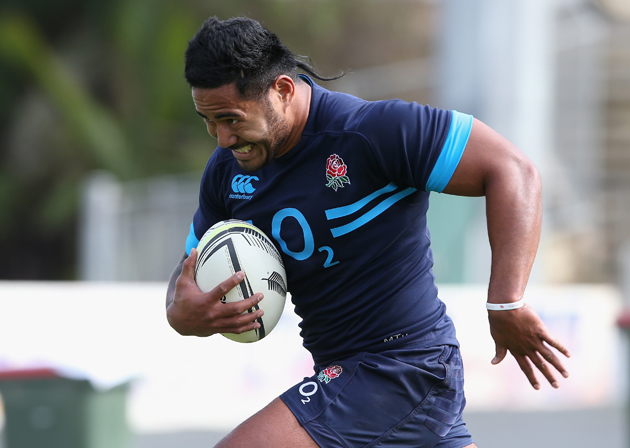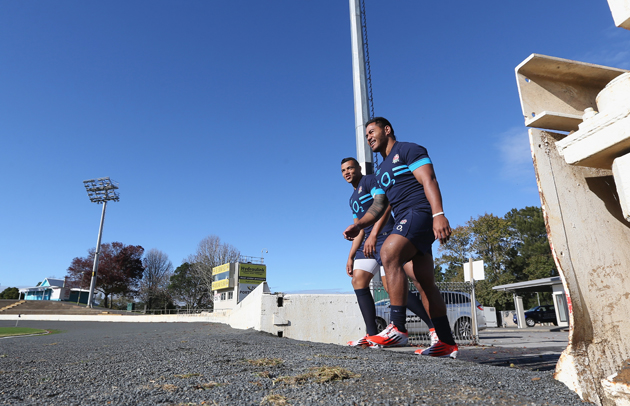Stuart Lancaster has selected Manu Tuilagi on the wing for Saturday's second Test – Rugby World analyses whether it is a good decision for England
I’LL COME clean. In the aftermath of England’s gut-wrenching defeat to New Zealand on Saturday when Sir Clive Woodward suggested Manu Tuilagi move to the wing for the second Test, I was hugely skeptical. In fact, the notion seemed frustratingly unnecessary.
Tuilagi had just produced a bullying performance from outside-centre that rocked Eden Park to its foundations. Despite being closely monitored, he broke the gainline on ten out of 13 carries, busting five tackles on the way. The 23-year-old had been the focal point of so much that went right for England, so why shunt him into another position? A position he has not started in at senior level for almost four years – a 44-19 success for Leicester Tigers over Newcastle on 27 November 2010, in case you are interested.
Well, there are reasons. Stuart Lancaster can now call upon Luther Burrell and Billy Twelvetrees – a partnership that blends brawn, organisational skills, offloading prowess and another kicking option for the crucial territorial tussle. Adding Tuilagi to that threequarter line might just bring the clinical edge needed to transform England into force capable of clinching the 2015 World Cup.
However, Lancaster’s attempt to shoehorn his most potent attackers into a back-line at the expense of specialists Jonny May and Chris Ashton could also send any chance of a historic series victory swirling down the drain. Either way, a punchy wildcard has been played. Let’s take a glance at some pros and cons…
Attack
Aside from heightened responsibility on the kick-chase – which must be spot on – not much changes for Manu Tuilagi here. From set-piece he can still be used off Owen Farrell’s shoulder, either as a first-phase missile or tackler-attracting decoy (much like George North’s role for Wales). England’s lineout and scrum are in excellent fettle, so they have a decent launchpad from which to test New Zealand’s first-up tackling through the middle.
With Twelvetrees in the team, ‘two-sided’ attacking structures – a competent first-receiver on either side of the breakdown – should ensure Tuilagi gets plenty of involvements including a few isolated one-on-one situations, where he is devastating. His strike rate of 11 tries in 23 Tests is world class (better than those of North, Cory Jane and Ben Smith) and added muscle is sure to aid England’s current uncertainty in the finishing department.
Besides anything else, we can expect a stretched affair under the roof at Forsyth Barr Stadium. Seven Super 15 matches at the venue so far this campaign have brought a total of 45 tries. New Zealand’s last outing there was a 41-33 defeat of Australia. Kicking goals won’t be enough. If England’s outstanding breakdown allows them to garner 56% possession as it did in Auckland, Tuilagi latching onto offloads will turn pressure into points.
Defence
Undeniably there are more concerns when NZ have ball in hand. Wing is the toughest position to adopt in England’s system. Lancaster expects widemen to “push up as the end defender but also anticipate kicks and cover the backfield”. It’s a double-edged task that requires pace, positional nous and ability to read a fly-half’s body language – not easy.
Now, Tuilagi’s natural rugby sense is underrated. This week will not be the first time he has trained as a wing in the England set-up, either. Do not be too surprised if his positioning is sound. However, contestable kicks are the All Blacks’ key weapon. Jane and Julian Savea possess wonderful aerial skills, while scrum-half Aaron Smith is the premier box-kicker on the planet. New Zealand’s first port of call will be to pepper Tuilagi’s touchline.
Last is the concept of presence. A hefty specimen such as Tuilagi commands respect, even in crowded midfields. Ma’a Nonu definitely looked preoccupied last weekend. That said, Savea has accrued a record of 19 tries in 20 Tests with power as a principal attribute. Stationed opposite the hulking Hurricane, Tuilagi won’t give away an advantage there.
Breakdown
This is perhaps an unexpected note to finish on, but definitely a significant facet of Saturday’s encounter. Flooding rucks out wide is a Kiwi habit that filters up from age-group rugby to those lucky enough to wear black.
Especially at tackles in the tramlines (between five-metre line and the touchline), young New Zealanders are taught to keep their feet and march beyond the ball. It’s a practice that pays dividends at professional level – an overwhelming proportion of Test tries scored by Steve Hansen’s men come from turnover ball.
Tuilagi’s low centre of gravity and strength mean he is one of England’s best exponents on the floor, even among a squad that Graham Rowntree has moulded into a fine breakdown unit. Against New Zealand, those qualities are just as important in wider channels.
Rugby World Verdict
Even with the contingency of Ashton on the bench, this represents a calculated gamble. Still, Lancaster’s timing – trying a ballsy, potentially game-breaking combination with the series still alive – must be applauded. Ambition is the only way to overturn the world champions. This should be fascinating.








